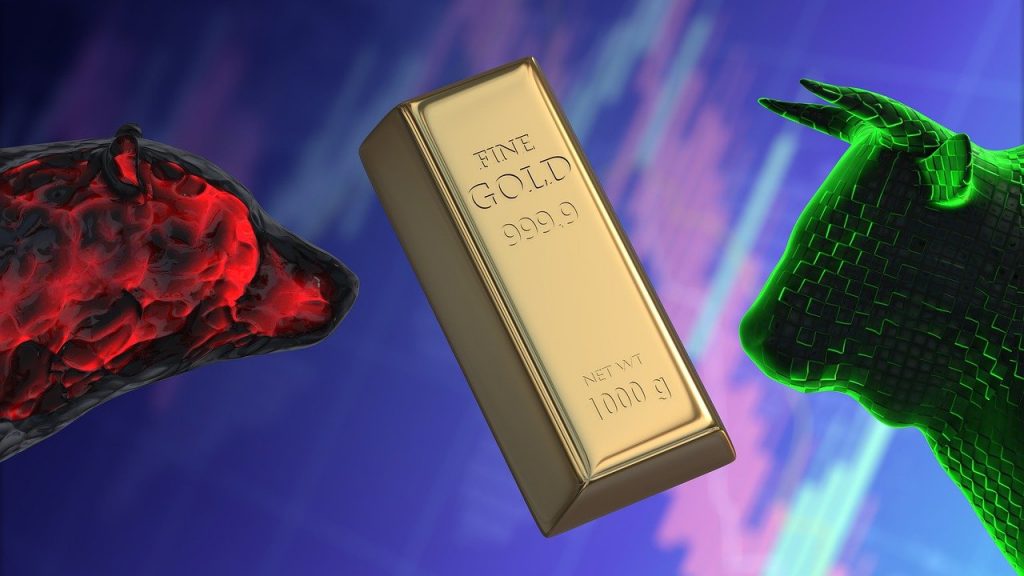Fears that gold price could see a sharp downturn in the aftermath of aggressive interest rate hikes by US central bank loomed until Russia-Ukraine conflict emerged as a face saver Gold remains on tenterhooks ahead of the US Federal Reserve’s scheduled meeting on 16 th of March where the central bank is expected to announce its first interest rate hike in the post pandemic era. While sentiments around rate hikes have put the prices in check, the ongoing Russia-Ukraine conflict has offset this advantage, taking the yellow metal at 19-month high levels.
Gold’s appeal as the safe-haven asset remains intact and here is why!
What has changed?
The yellow metal has been the biggest beneficiary of the Russia-Ukraine conflict and the outlook for this bullion metal remains strong in the near to immediate term. Gold is seen as an instrument to hedge one’s investments from potential losses at difficult times – like the one we are seeing now in the form of the ongoing war between the two neighbours. Earlier, the prices went ballistic at the peak of the first wave of the coronavirus pandemic.
There were fears that the gold prices could see a sharp downturn in the aftermath of aggressive interest rate hikes by the US central bank. Several reports suggested that the US Fed was looking to undertake at least 7-9 hikes to cool-off the inflation in the world’s largest democracy.
The first one was expected to come on 16 th of March and by 50-100 bps. In the US, the inflation is at a level not seen in four decades. To check its rise, the US Federal reserve began tightening liquidity late last year and was planning to undertake aggressive interest rate hikes to end the low interest rate regime and reduce easy availability of money. That led to softening in gold prices. The ongoing Russia-Ukraine conflict has thrown a spanner on Fed’s aggressive plans to increase interest rates, fearing inflation could increase even further in the event of an upward rate revision. Higher energy prices could lead to further escalation in retail inflation and thus reduce people’s ability to spend or consume. An interest rate hike now would likely stifle their ability to spend further and this could be playing on the mind of Fed officials. This has resulted in a dilemma for various central banks on how to strike the balance.
How Russia-Ukraine Conflict matters?
Russia’s military adventure in Ukraine has led to a significant uptick in commodity prices, with oil, gas, metals and food items bearing the brunt. Russia accounts for 12 per cent of the global crude oil production. The country is also the third largest producer and the second leading xporter of oil in the world. It is also among the leading producers of natural gas. The US and the UK have now put sanctions on the import of Russian oil and gas.
There is currently a demand-supply gap for crude oil and sanctions on Russia’s energy are expected to cause a collateral damage on Russia and the rest of the world. The crude oil prices have hit USD 140 last week. Moreover, Russia and Ukraine play important roles in the global supply chain of several industrial metals like copper, nickel, aluminium and iron. Russia is also among the leading producers of palladium and platinum. It is also the largest exporter of coal. The conflict will also likely have a considerable impact on edibles like oil, wheat and other grains. So, the global inflations fears are real and could unsettle policy decisions of several central banks across the world. This uncertainty is likely to aid gold in the near to immediate term.
Volatility
The last week proved to be extremely volatile for gold as the precious metal hit highs of USD 2075 per ounce only to see significant corrections bringing it down below USD 2000. The softening in prices have been on the backdrop of comments made by the Russian President where he indicated some progress being made in talks with Ukraine. Gold’s rise has been fueling the fear of inflation, in the process creating a higher traction for bullion.
The movement and direction in price will be based on news which emerges on a day-to-day basis in the near term.
Indian Standpoint
India does not remain untouched by the events in the US or Russia-Ukraine context. It is the second largest importer and consumer of gold, just behind China. India’s gold imports were at 1,067.72 tonnes in 2021 as against 430.11 tonnes during 2020. Then the demand was hit due to the pandemic, as media reports have cited the Gem Jewellery Export Promotion Council (GJEPC). The imports in 2019 were around 836.38 tonnes.
Over the week, Gold has corrected from the high of Rs 55,000 per 10 gm to around Rs 53,000. But India has to watch out on two fronts – the price of gold itself in the international markets and, secondly the movement of the rupee. The Rupee has taken a severe hit with the trengthening of the US Dollar. As long as the US-Russia crisis remains on the boil, rupee is unlikely to benefit. So, even if the Gold prices slip in the wake of interest rate hikes in the US, the import prices will be a pain point for end users and impact sales here until INR retains its strength against the USD.

